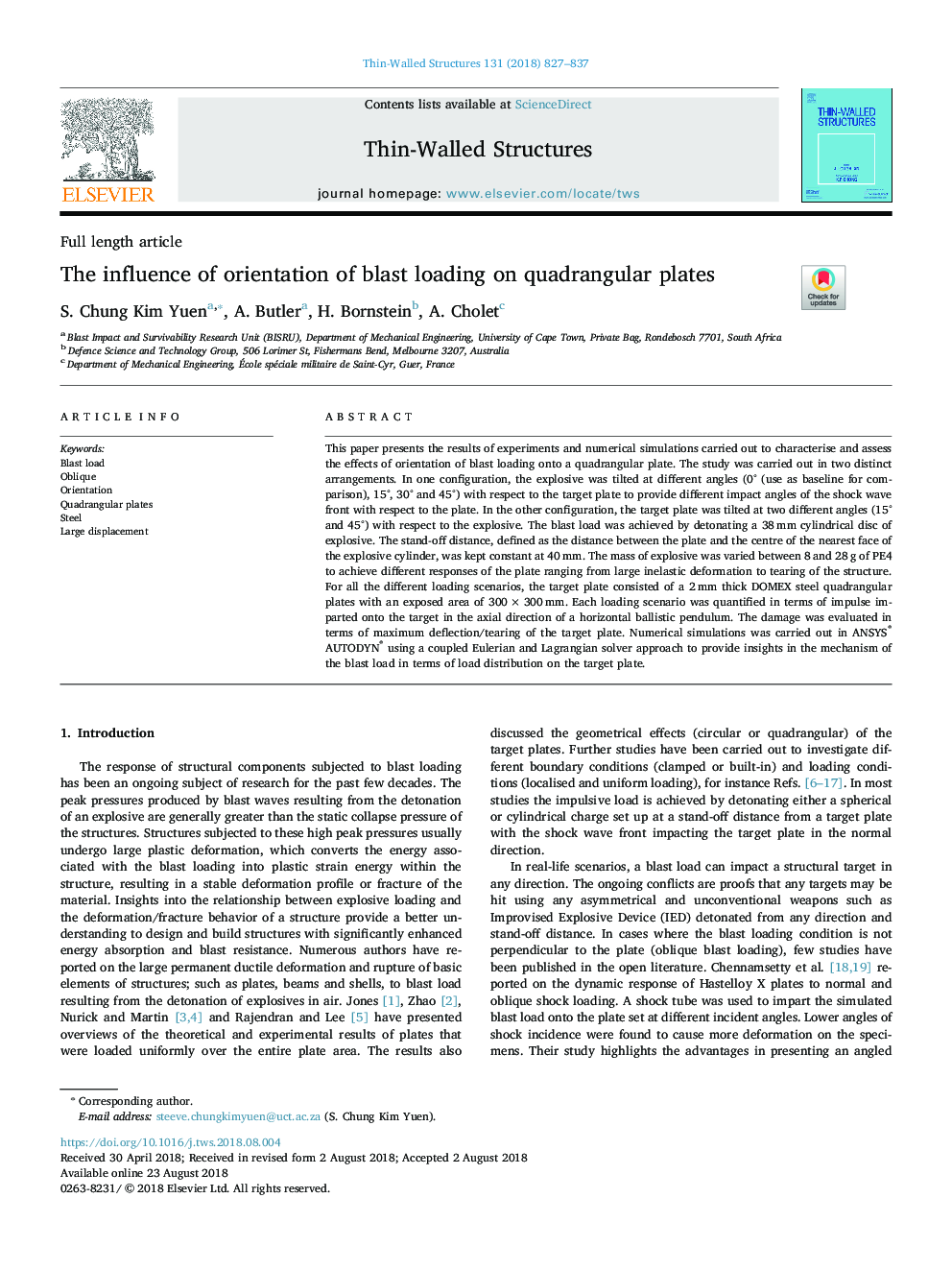| Article ID | Journal | Published Year | Pages | File Type |
|---|---|---|---|---|
| 11001336 | Thin-Walled Structures | 2018 | 11 Pages |
Abstract
This paper presents the results of experiments and numerical simulations carried out to characterise and assess the effects of orientation of blast loading onto a quadrangular plate. The study was carried out in two distinct arrangements. In one configuration, the explosive was tilted at different angles (0° (use as baseline for comparison), 15°, 30° and 45°) with respect to the target plate to provide different impact angles of the shock wave front with respect to the plate. In the other configuration, the target plate was tilted at two different angles (15° and 45°) with respect to the explosive. The blast load was achieved by detonating a 38â¯mm cylindrical disc of explosive. The stand-off distance, defined as the distance between the plate and the centre of the nearest face of the explosive cylinder, was kept constant at 40â¯mm. The mass of explosive was varied between 8 and 28â¯g of PE4 to achieve different responses of the plate ranging from large inelastic deformation to tearing of the structure. For all the different loading scenarios, the target plate consisted of a 2â¯mm thick DOMEX steel quadrangular plates with an exposed area of 300â¯Ãâ¯300â¯mm. Each loading scenario was quantified in terms of impulse imparted onto the target in the axial direction of a horizontal ballistic pendulum. The damage was evaluated in terms of maximum deflection/tearing of the target plate. Numerical simulations was carried out in ANSYS® AUTODYN® using a coupled Eulerian and Lagrangian solver approach to provide insights in the mechanism of the blast load in terms of load distribution on the target plate.
Related Topics
Physical Sciences and Engineering
Engineering
Civil and Structural Engineering
Authors
S. Chung Kim Yuen, A. Butler, H. Bornstein, A. Cholet,
